
How to Use Soil Moisture Sensor: Examples, Pinouts, and Specs
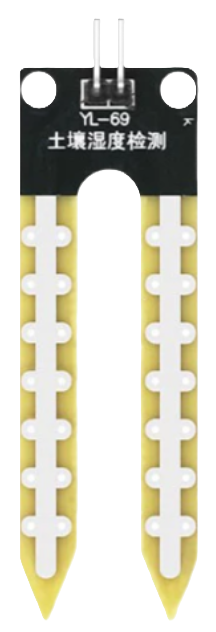
 Design with Soil Moisture Sensor in Cirkit Designer
Design with Soil Moisture Sensor in Cirkit DesignerIntroduction
The Soil Moisture Sensor is a device designed to measure the moisture content in soil. It provides real-time data that can be used to monitor and manage irrigation systems, ensuring plants receive the optimal amount of water. This sensor is widely used in agricultural automation, gardening, and environmental monitoring projects. Its simplicity and compatibility with microcontrollers make it a popular choice for hobbyists and professionals alike.
Explore Projects Built with Soil Moisture Sensor
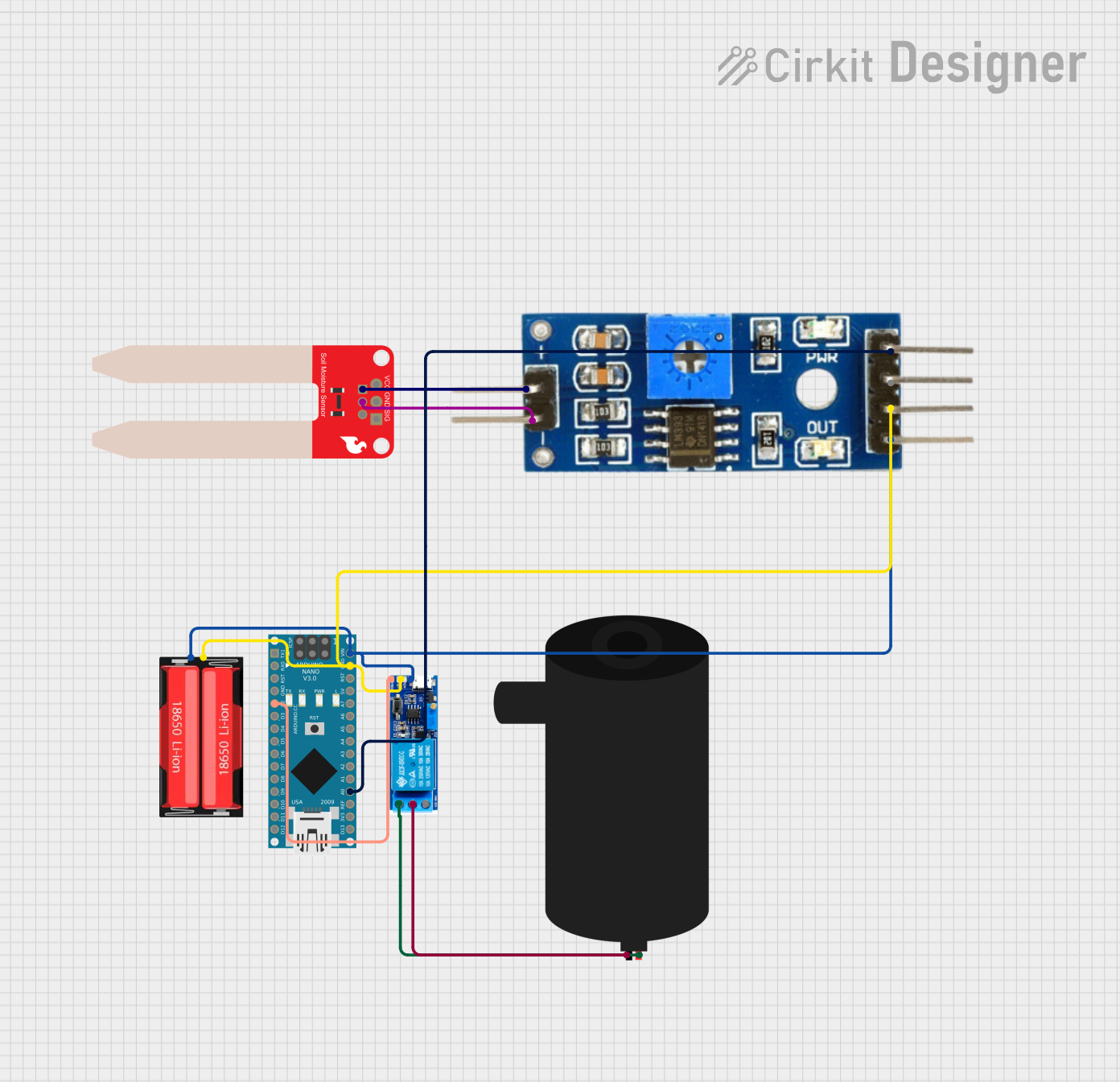
 Open Project in Cirkit Designer
Open Project in Cirkit Designer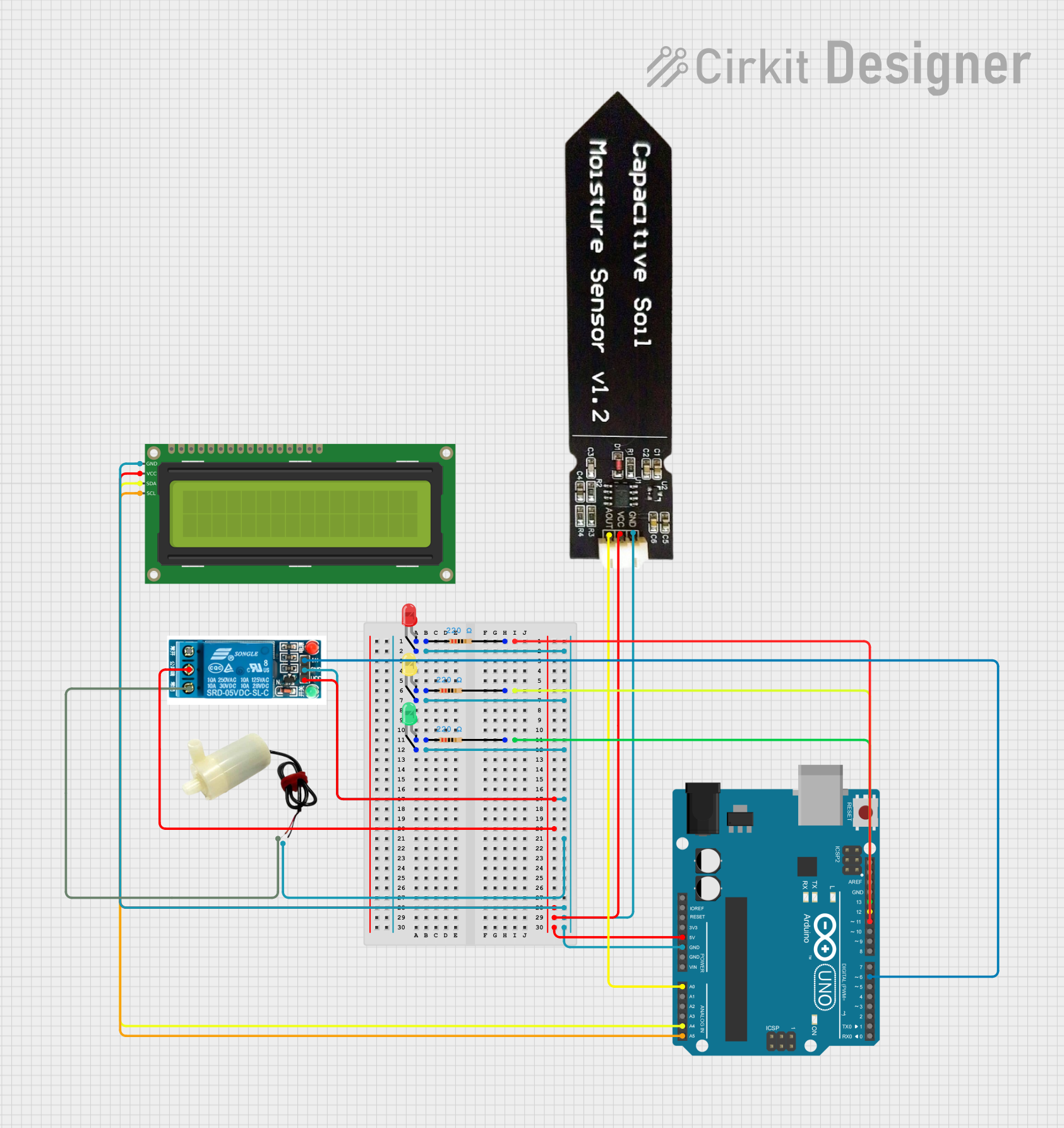
 Open Project in Cirkit Designer
Open Project in Cirkit Designer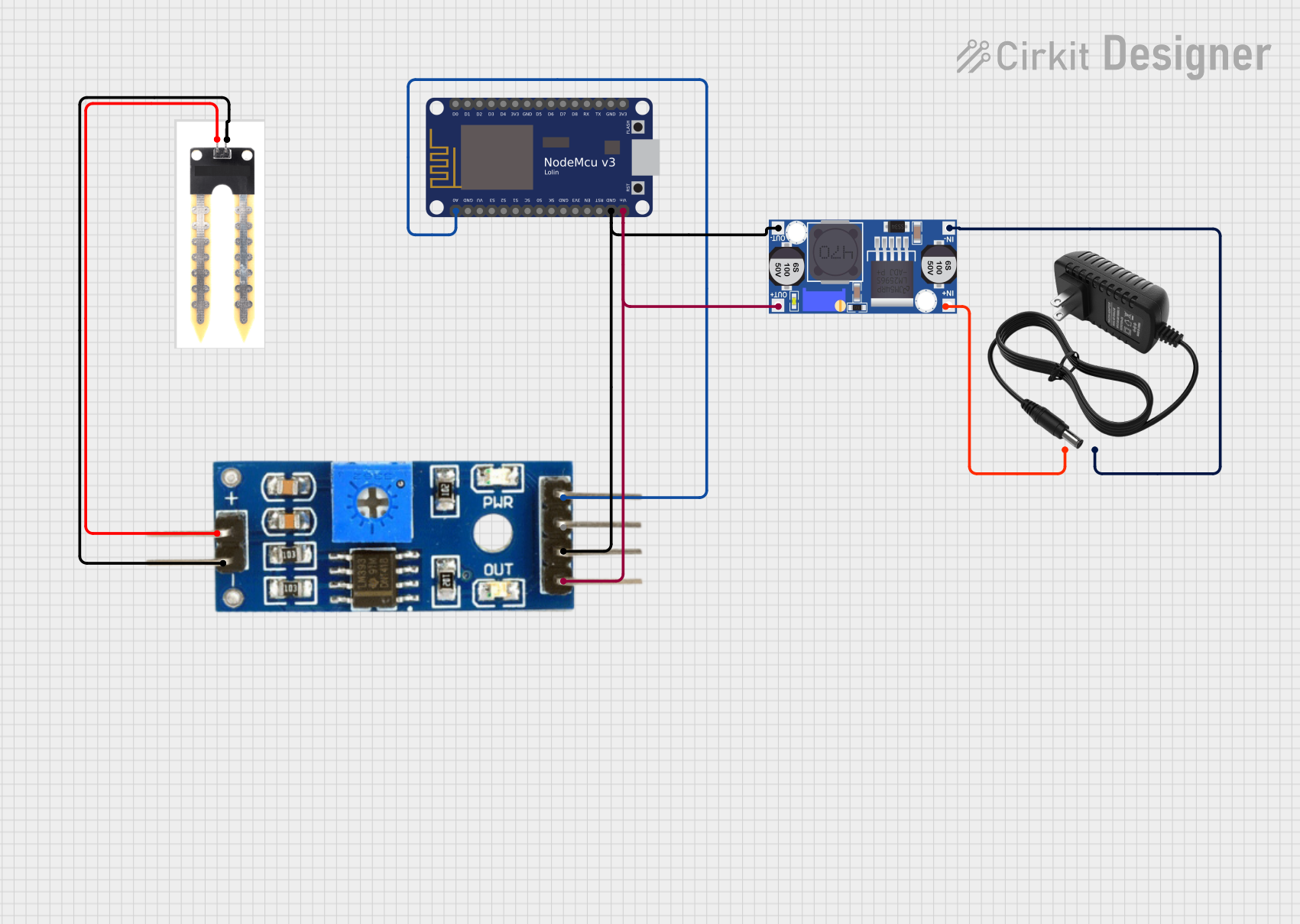
 Open Project in Cirkit Designer
Open Project in Cirkit Designer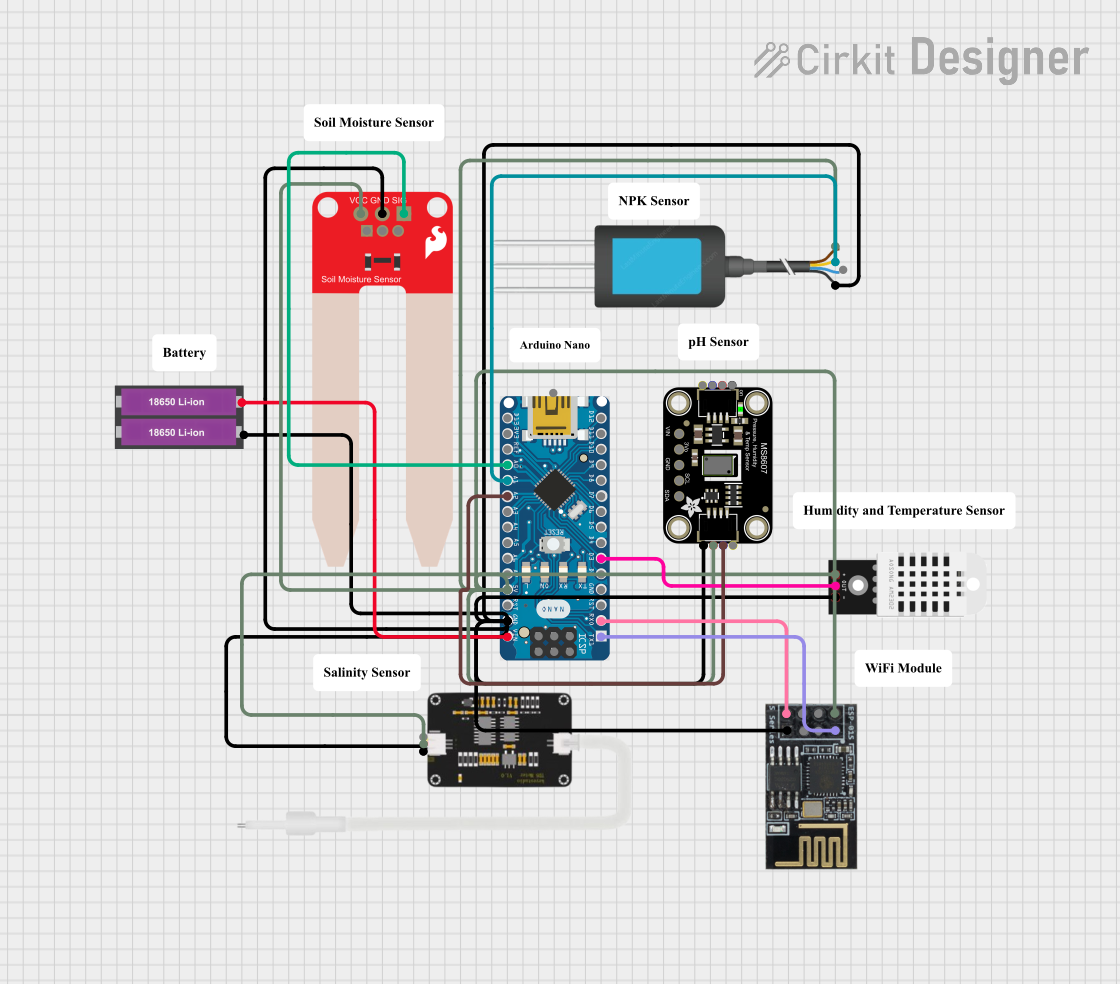
 Open Project in Cirkit Designer
Open Project in Cirkit DesignerExplore Projects Built with Soil Moisture Sensor

 Open Project in Cirkit Designer
Open Project in Cirkit Designer
 Open Project in Cirkit Designer
Open Project in Cirkit Designer
 Open Project in Cirkit Designer
Open Project in Cirkit Designer
 Open Project in Cirkit Designer
Open Project in Cirkit DesignerCommon Applications and Use Cases
- Automated irrigation systems
- Smart gardening projects
- Agricultural monitoring
- Environmental research
- Soil analysis for plant growth optimization
Technical Specifications
The Soil Moisture Sensor typically consists of two main parts: the probe and the control board. The probe detects the soil's moisture level, while the control board processes the signal and outputs the data.
Key Technical Details
- Operating Voltage: 3.3V to 5V
- Output Types: Analog (voltage level) and Digital (threshold-based)
- Current Consumption: < 20mA
- Moisture Detection Range: 0% (dry) to 100% (wet)
- Dimensions: Varies by model, typically 60mm x 20mm (probe)
Pin Configuration and Descriptions
Control Board Pinout
| Pin Name | Description |
|---|---|
| VCC | Power supply input (3.3V to 5V) |
| GND | Ground connection |
| A0 | Analog output pin (provides a voltage proportional to soil moisture level) |
| D0 | Digital output pin (high/low signal based on adjustable threshold) |
Probe Pinout
| Pin Name | Description |
|---|---|
| Pin 1 | Connects to the control board's signal input |
| Pin 2 | Connects to the control board's ground |
Usage Instructions
How to Use the Soil Moisture Sensor in a Circuit
Connect the Sensor:
- Connect the VCC pin of the control board to the 5V pin of your microcontroller (e.g., Arduino UNO).
- Connect the GND pin of the control board to the ground (GND) of your microcontroller.
- Connect the A0 pin to an analog input pin (e.g., A0) on your microcontroller for analog readings.
- Optionally, connect the D0 pin to a digital input pin if you want to use the threshold-based output.
Insert the Probe:
- Place the probe into the soil at the desired depth. Ensure the probe is clean and free of debris for accurate readings.
Adjust the Threshold (Optional):
- Use the potentiometer on the control board to set the moisture threshold for the digital output (D0). Turn clockwise to increase sensitivity and counterclockwise to decrease it.
Read the Data:
- For analog readings, use the microcontroller's ADC (Analog-to-Digital Converter) to measure the voltage on the A0 pin.
- For digital readings, monitor the D0 pin for high/low signals.
Important Considerations and Best Practices
- Avoid prolonged exposure of the probe to water or highly acidic/alkaline soil, as this can cause corrosion.
- Clean the probe after use to prevent residue buildup, which may affect accuracy.
- Use a pull-up resistor on the digital output pin (D0) if required by your microcontroller.
- Calibrate the sensor for your specific soil type to improve accuracy.
Example Code for Arduino UNO
// Example code to read soil moisture levels using an Arduino UNO
// Connect the A0 pin of the sensor to the A0 pin on the Arduino
const int sensorPin = A0; // Analog pin connected to the sensor's A0 pin
int sensorValue = 0; // Variable to store the sensor reading
void setup() {
Serial.begin(9600); // Initialize serial communication at 9600 baud
pinMode(sensorPin, INPUT); // Set the sensor pin as an input
}
void loop() {
sensorValue = analogRead(sensorPin); // Read the analog value from the sensor
Serial.print("Soil Moisture Level: ");
Serial.println(sensorValue); // Print the sensor value to the Serial Monitor
// Add a delay to avoid flooding the Serial Monitor with data
delay(1000); // Wait for 1 second before the next reading
}
Troubleshooting and FAQs
Common Issues and Solutions
Inconsistent Readings:
- Ensure the probe is fully inserted into the soil and free of debris.
- Check for loose or faulty connections between the sensor and the microcontroller.
No Output from the Sensor:
- Verify that the sensor is receiving the correct voltage (3.3V to 5V).
- Check the potentiometer setting if using the digital output (D0).
Corrosion on the Probe:
- Clean the probe with a soft cloth and mild detergent. Avoid abrasive materials.
- Consider using a corrosion-resistant probe for long-term applications.
Analog Readings Not Changing:
- Ensure the soil moisture level is actually changing (e.g., by adding water to the soil).
- Test the sensor in a different soil type to rule out calibration issues.
FAQs
Q: Can the sensor be used outdoors?
A: Yes, but it is recommended to protect the control board from moisture and extreme weather conditions.
Q: How do I calibrate the sensor?
A: Take readings in dry soil and fully saturated soil to determine the sensor's range. Use these values to map the analog readings to a percentage scale.
Q: What is the lifespan of the probe?
A: The lifespan depends on usage and environmental conditions. Regular cleaning and proper care can extend its life.
Q: Can I use multiple sensors with one microcontroller?
A: Yes, connect each sensor to a separate analog or digital input pin on the microcontroller. Ensure the power supply can handle the total current draw.